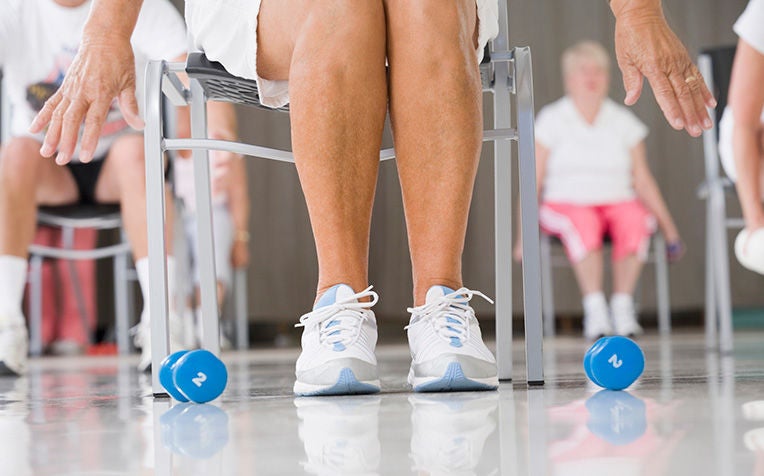
Post-stroke complications include motor complications, as well as cognitive and psychological complications.
Post-stroke complications are common, occurring in 40-95 per cent of patients.
These complications can have serious consequences including hospital readmission, greater disability and even death. Prevention, screening and early treatment are vital in the management of post-stroke complications.
7 Possible complications after a stroke
1) Motor complications
Post-stroke motor complications include muscle spasticity (an abnormal increase in muscle tone), joint contractures and shoulder problems. Many of these can be prevented. Screening and early treatment are important in the management of post-stroke motor complications. Rehabilitation is critical to reducing the incidence and progression of motor complications.
Spasticity, or increased tone of muscle groups, can occur in the affected limbs following stroke. In some cases, increased muscle tone may be helpful as it provides tone and support to the affected limbs. However, spasticity can also have negative consequences including decreased mobility, functional disability and joint problems. Management of spasticity includes physical treatments such as stretching as well as medications to reduce muscle tone.
Contractures, joint deformities due to abnormal tightness and shortening of muscle, can occur due to muscle spasticity and limited mobility following stroke. These can be painful, may lead to skin and hygiene problems and can often interfere with movement and care of patients. Joint contractures may be prevented by regular stretching of muscles and movement across joint motion ranges.
Shoulder subluxation, or loosening of the shoulder joint, can be caused by the weight and pressure of a weak arm following stroke. If untreated, it can progress to cause pain and joint dislocation.
Proper positioning of the weak arm as well as the use of arm slings where appropriate can prevent the onset and reduce the progression of shoulder subluxation.
2) Cognitive and psychological complications
Cognitive problems following stroke range from mild impairment of mental processes to severe dementia causing disability. Screening is important to detect mild cognitive impairment. There are currently medications which are proven to slow down the progression of post-stroke cognitive impairment.
Psychological disturbances after a stroke include mood disorders such as post-stroke depression as well as post-stroke anxiety.
Management of these psychological complications includes medications, counselling and behavioral therapy. The caregiver, family and friends play a crucial role in supporting stroke patients with cognitive and mood complications.
3) Complications due to immobility
Following a stroke, patients may have limited mobility which predisposes them to complications such as pressure sores and deep vein thrombosis (DVT). Early mobilisation is the key to avoiding these complications.
Prolonged pressure on the skin due to immobility can lead to skin breaks with the potential complication of skin infection.
Regular re-positioning and devices to minimise pressure such as pressure-relieving mattresses, have been shown to reduce the incidence of pressure sores.
DVT is clotting within the vein of the lower limb and can be potentially life-threatening. Early mobilisation and medications can help prevent DVT in the immobilised stroke patient.
4) Difficulty swallowing (dysphagia)
Stroke patients often have swallowing difficulties which can increase the risk of choking and chest infection.
The speech therapist may recommend a thickened diet, supervised feeding and specific techniques to aid swallowing and prevent complications.
In some cases, it may be too unsafe to take food via the mouth and tube feeding may be recommended to provide nutrition and hydration.
5) Prone to infections
Stroke patients are at risk of infections, particularly those affecting the chest and urinary tract.
Chest infection following stroke is commonly due to aspiration, inhaling oral or gastric contents into the lung due to swallowing difficulties.
Techniques like eating or drinking upright instead of in a low lying position, diet modification to facilitate swallowing and tube-feeding can lessen the risk of aspiration.
Stroke patients are prone to urinary retention which increases the risk of urinary tract infections.
Post-stroke chest and urinary tract infections are usually treated with antibiotics.
6) Prone to falls and accidents
Stroke deficits such as weakness, sensory impairment, incoordination, imbalance and visual problems predispose the patient to accidents and falls.
The physical or occupational therapist will advise on home modifications to assist the patient in moving around the house to reduce accidents. Gait training and assisted walking devices may be prescribed to lessen the risk of falls.
7) Social impact
Stroke complications not only affect the stroke patient but the family too. Stroke affects the dynamics of a family. Stroke patients may no longer be able to work or perform their previous roles in the family.
A family member may need to provide care for the stroke patient. Stroke has an economic burden due to the cost of medical care as well as the loss of income. Hence the quality of life of the stroke patient’s family may be affected.
Talking to a member of the healthcare team about social concerns is important as there are social support services available that may be able to ease some of the burden. Joining a stroke support group can also help the stroke patient, caregiver and family cope with the social impact of stroke.
Ref: H24 (ed)
Check out more post-stroke articles:
Stroke Recovery: How Children Can Help
Suffered a Stroke? 5 Questions to Ask Your Doctor
Contributed by


















 Get it on Google Play
Get it on Google Play